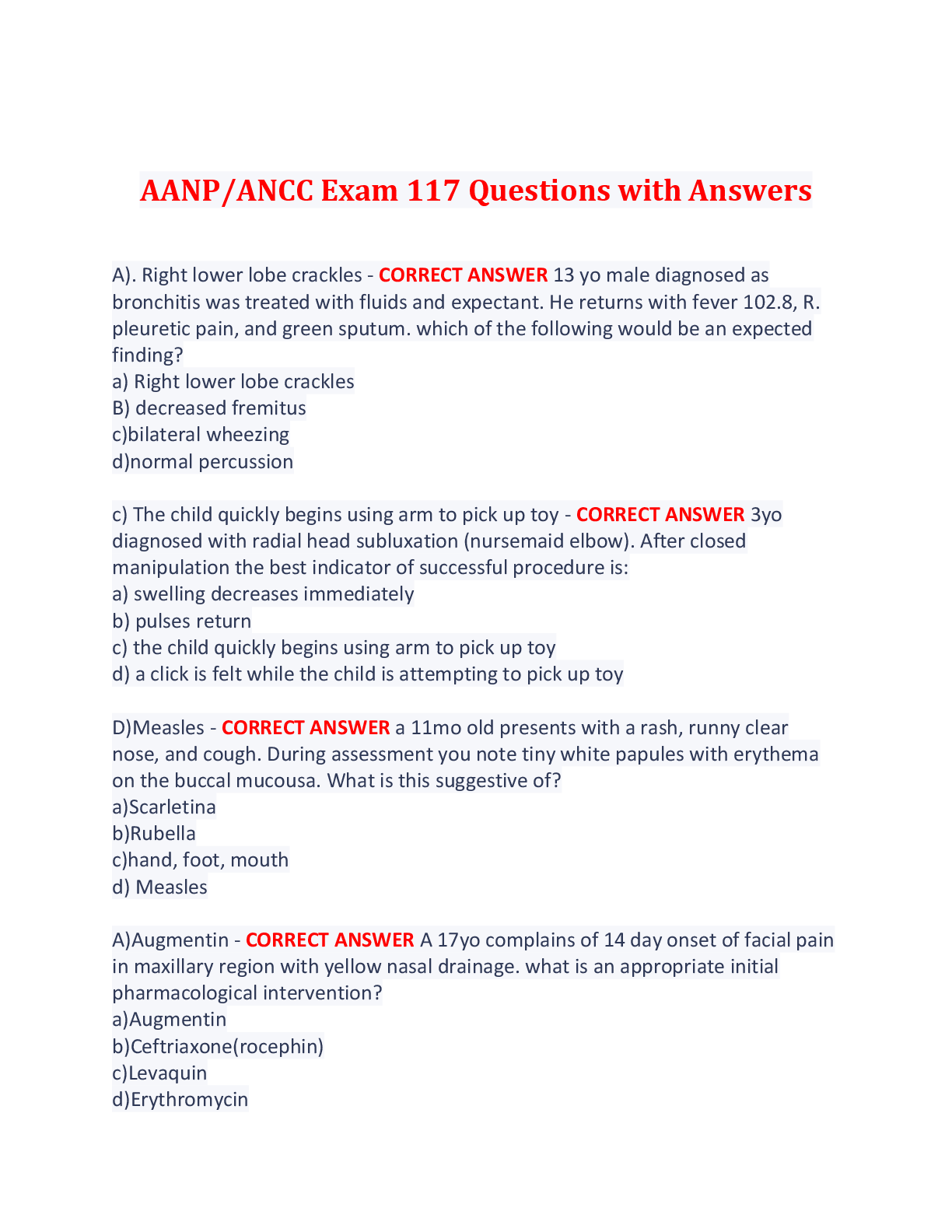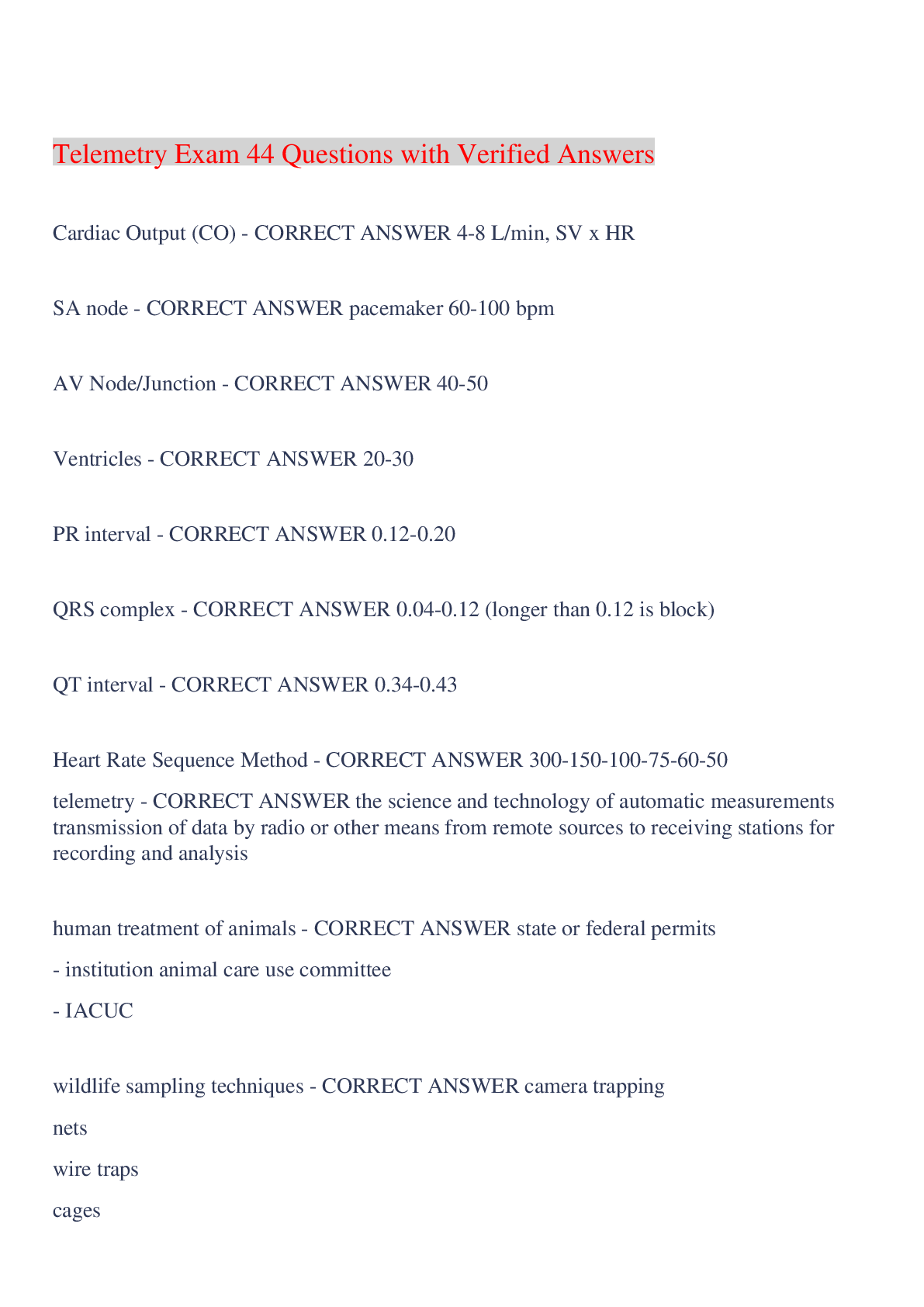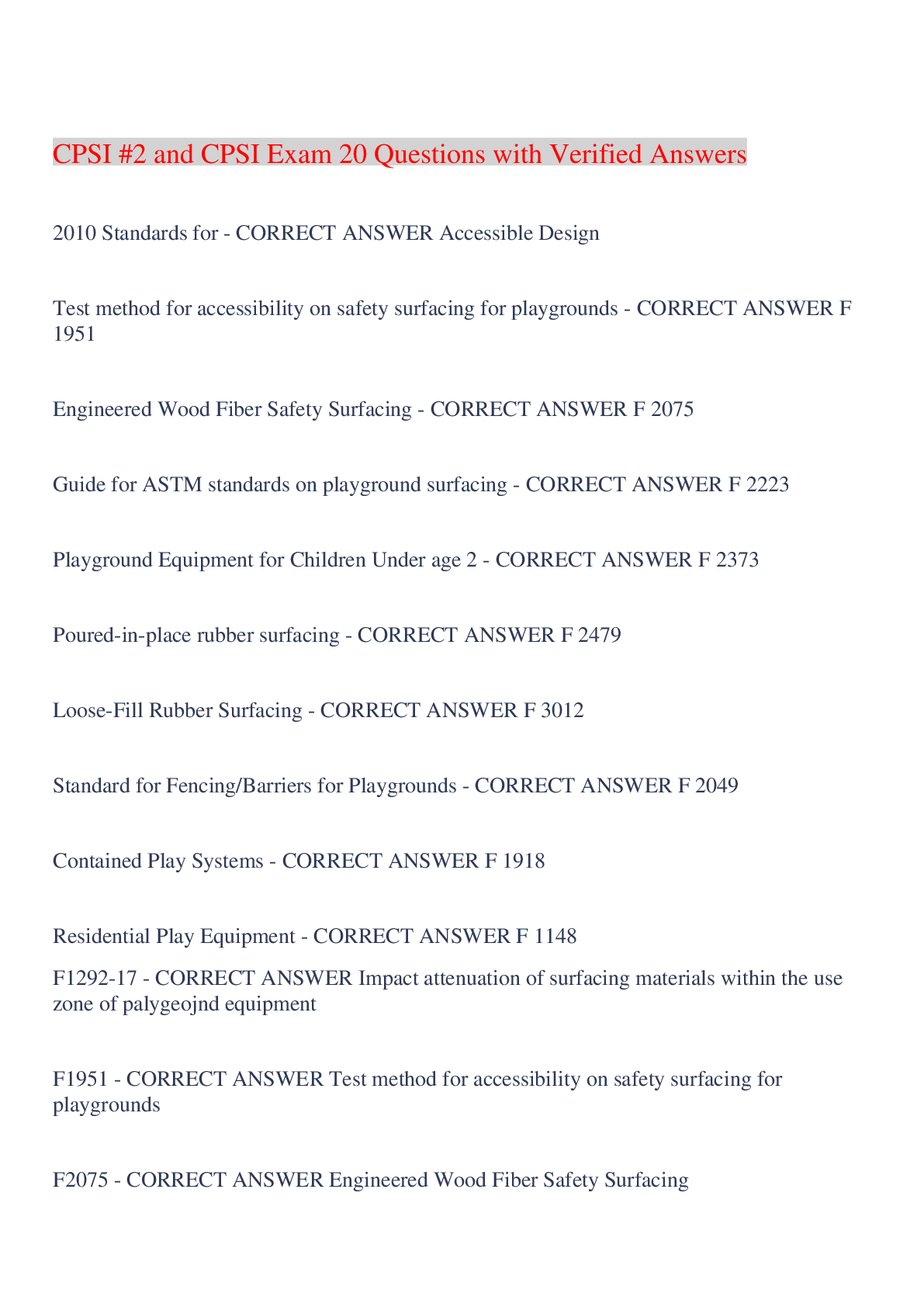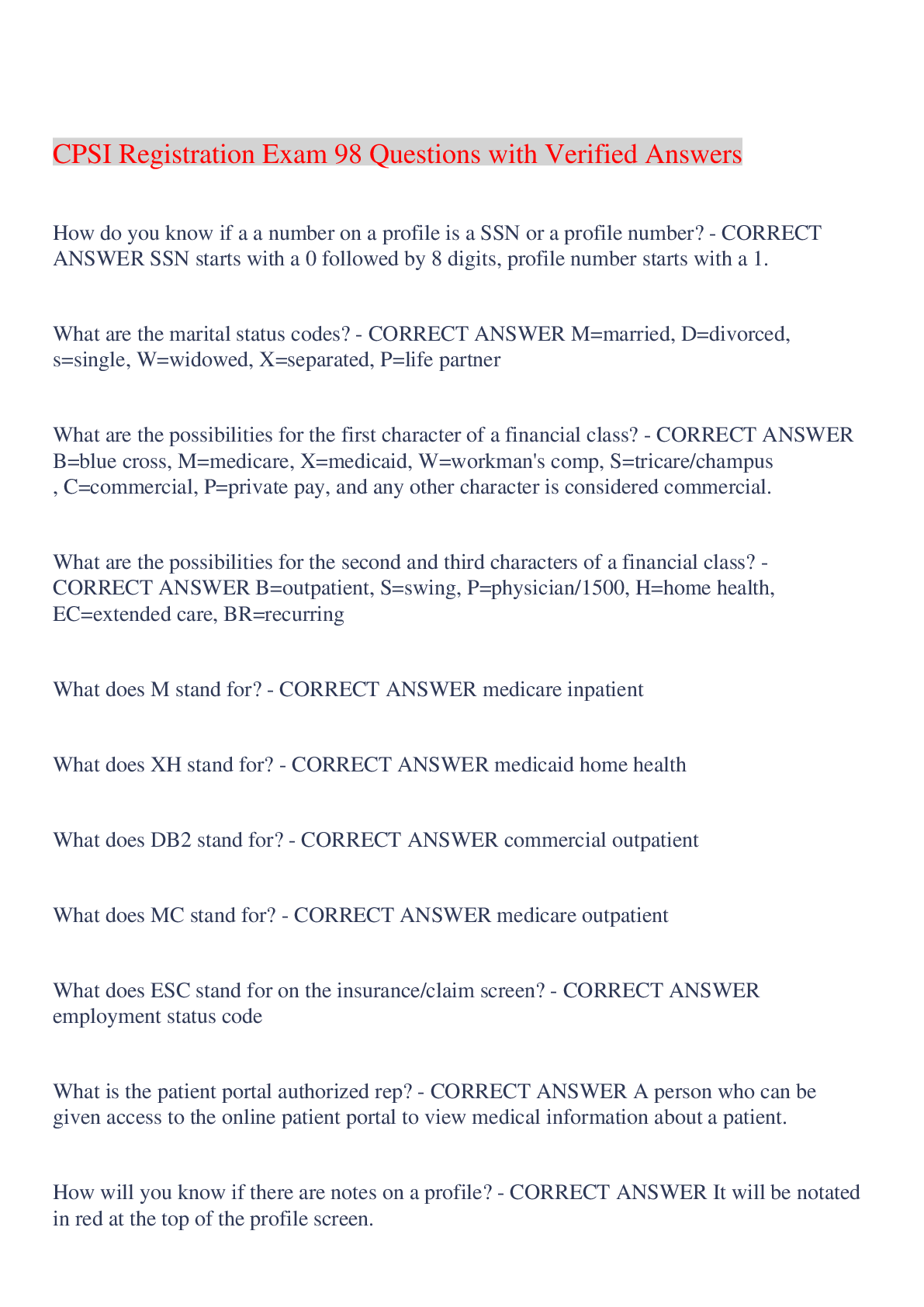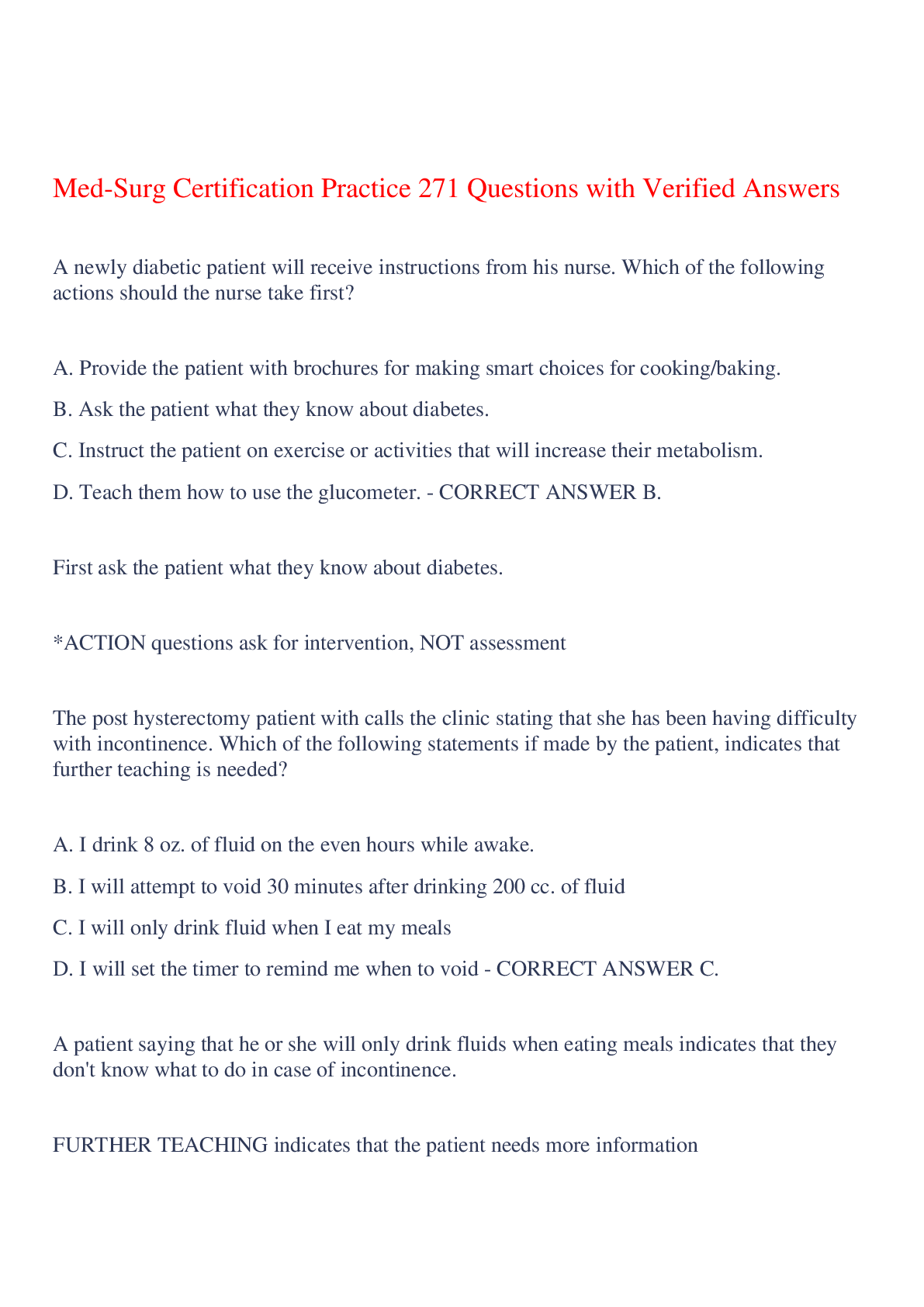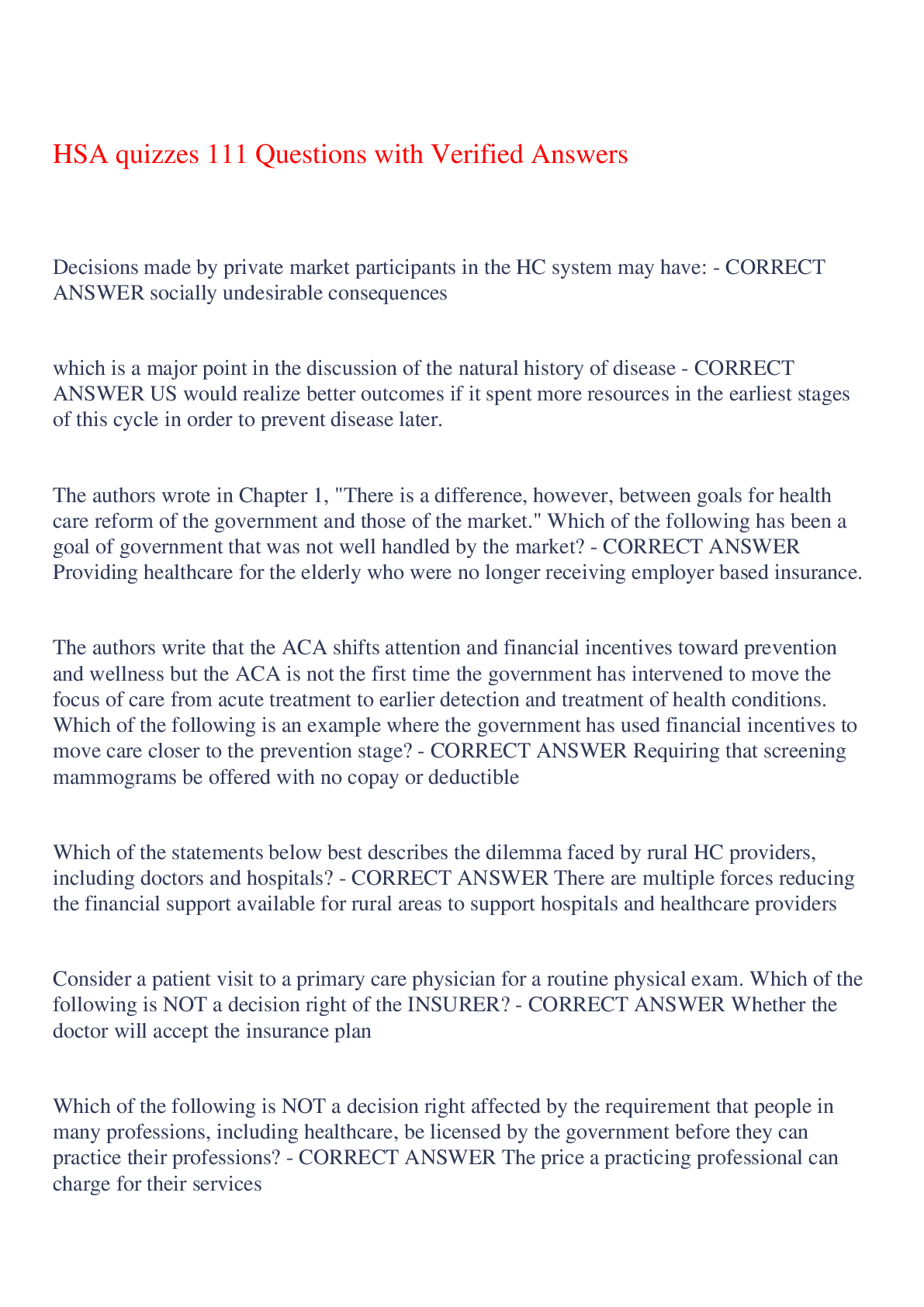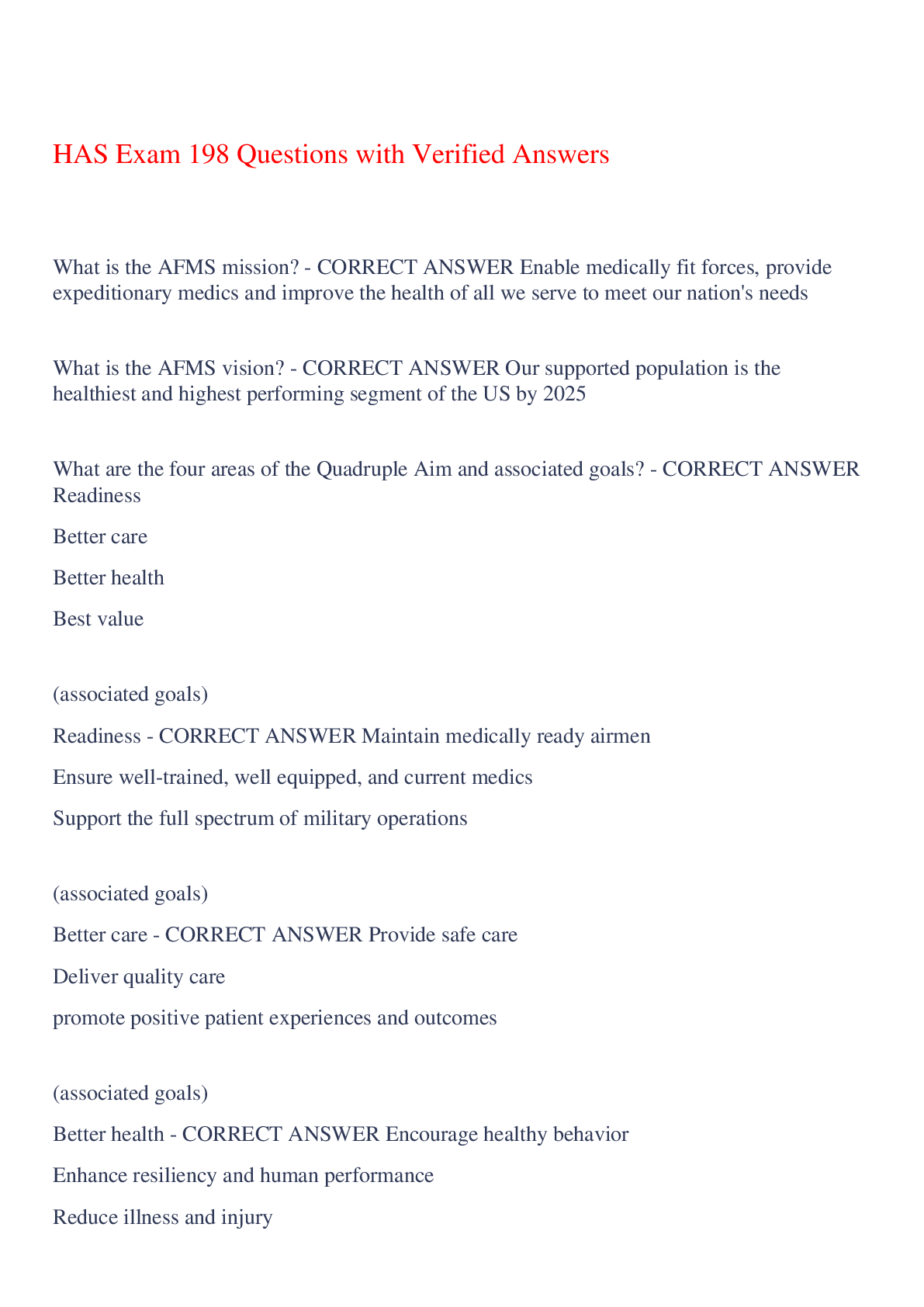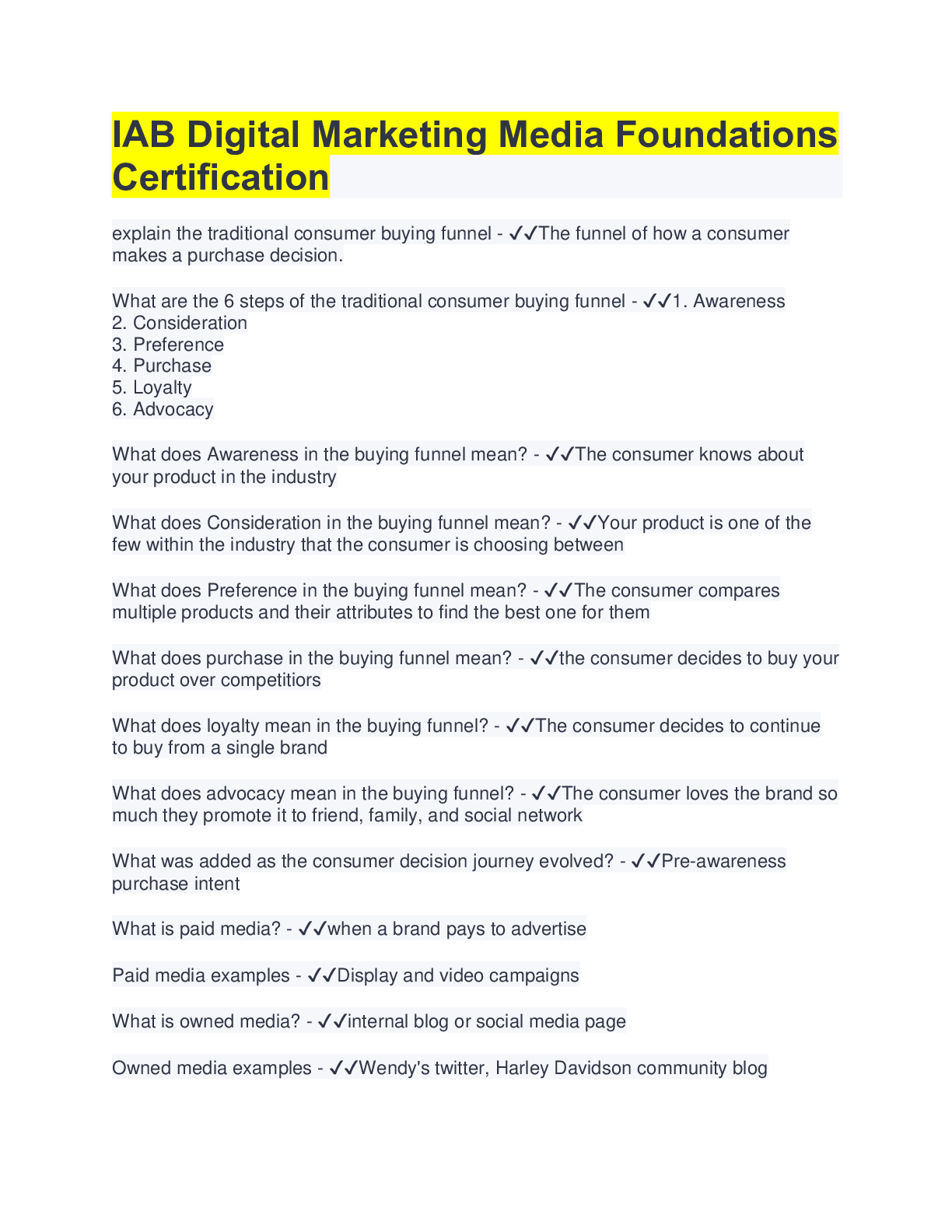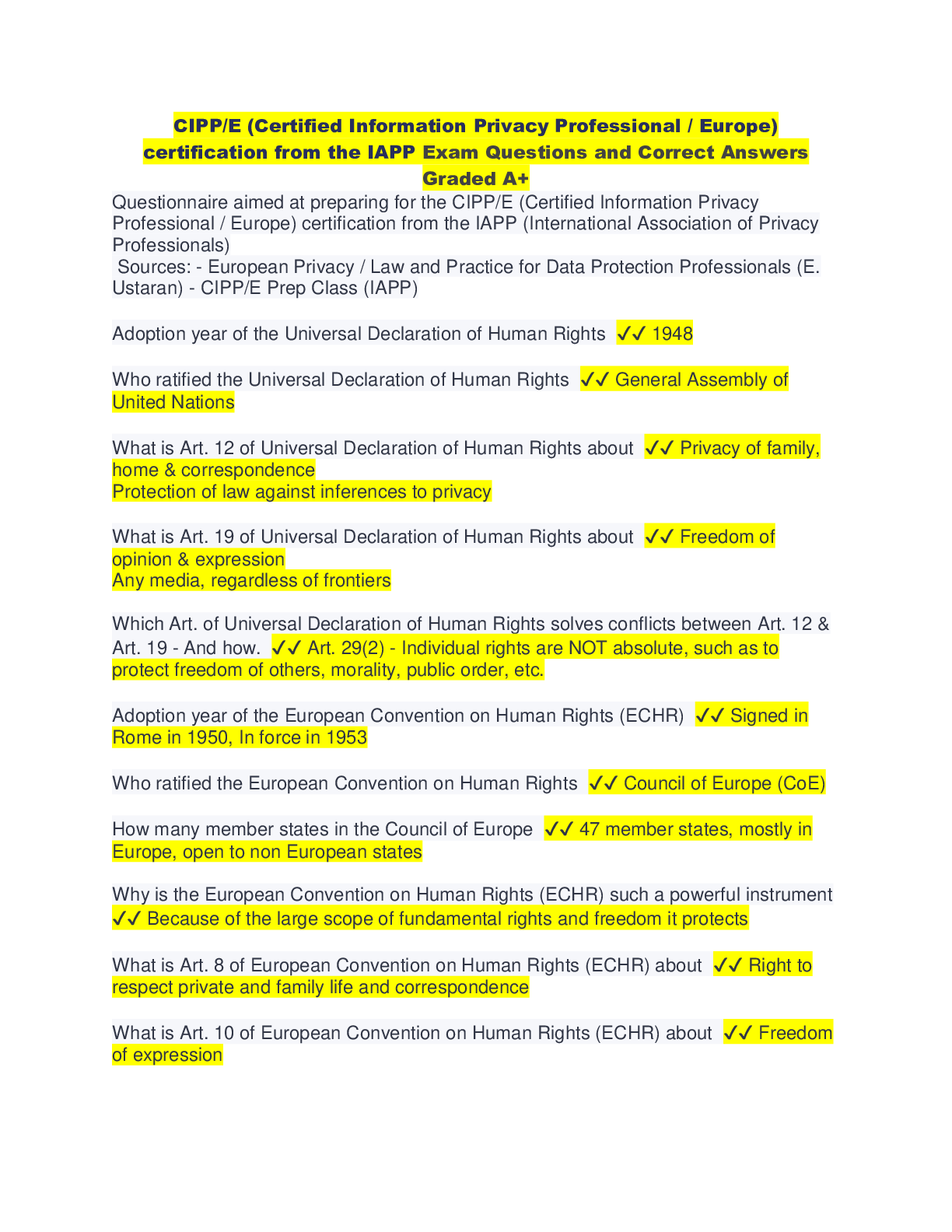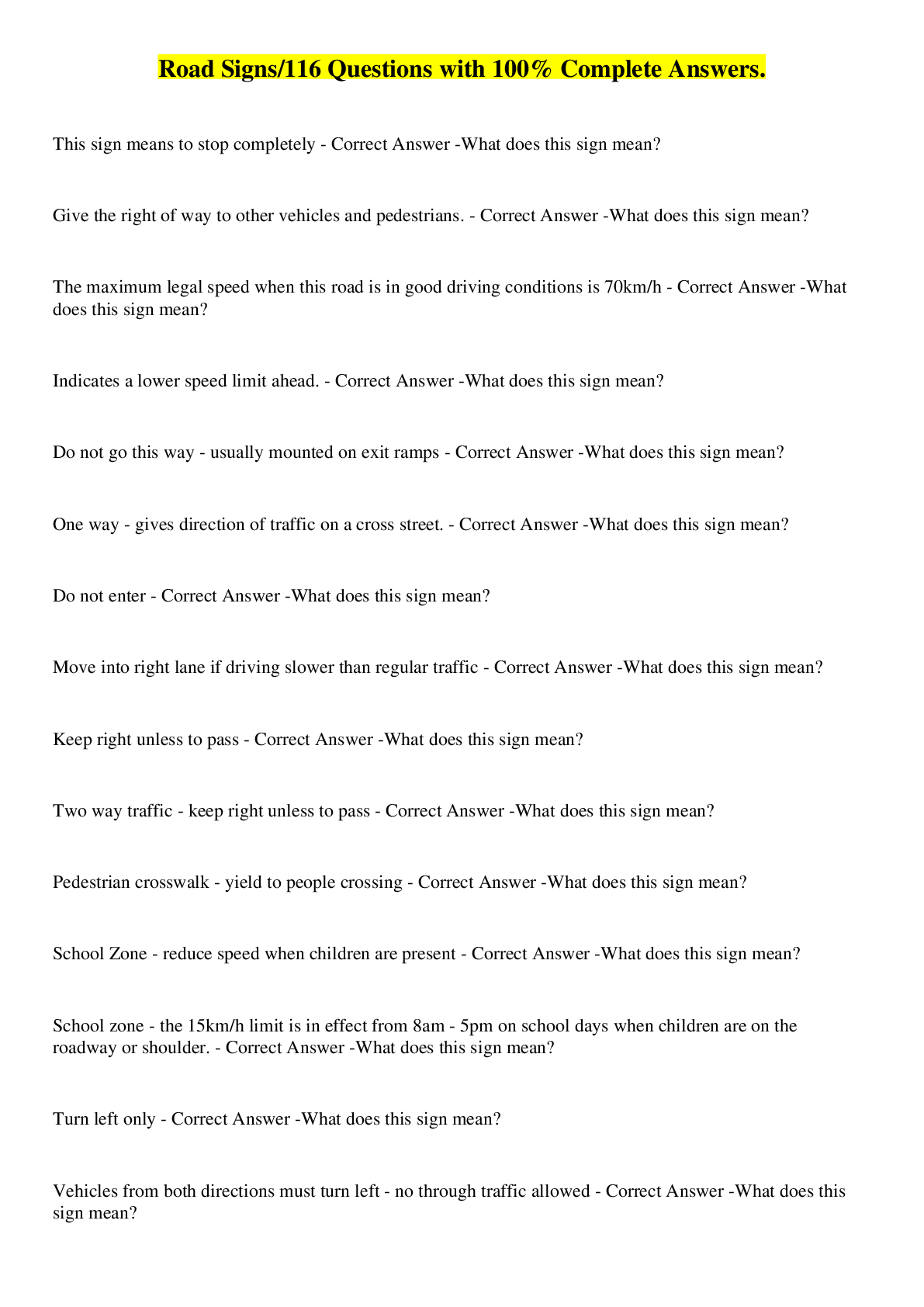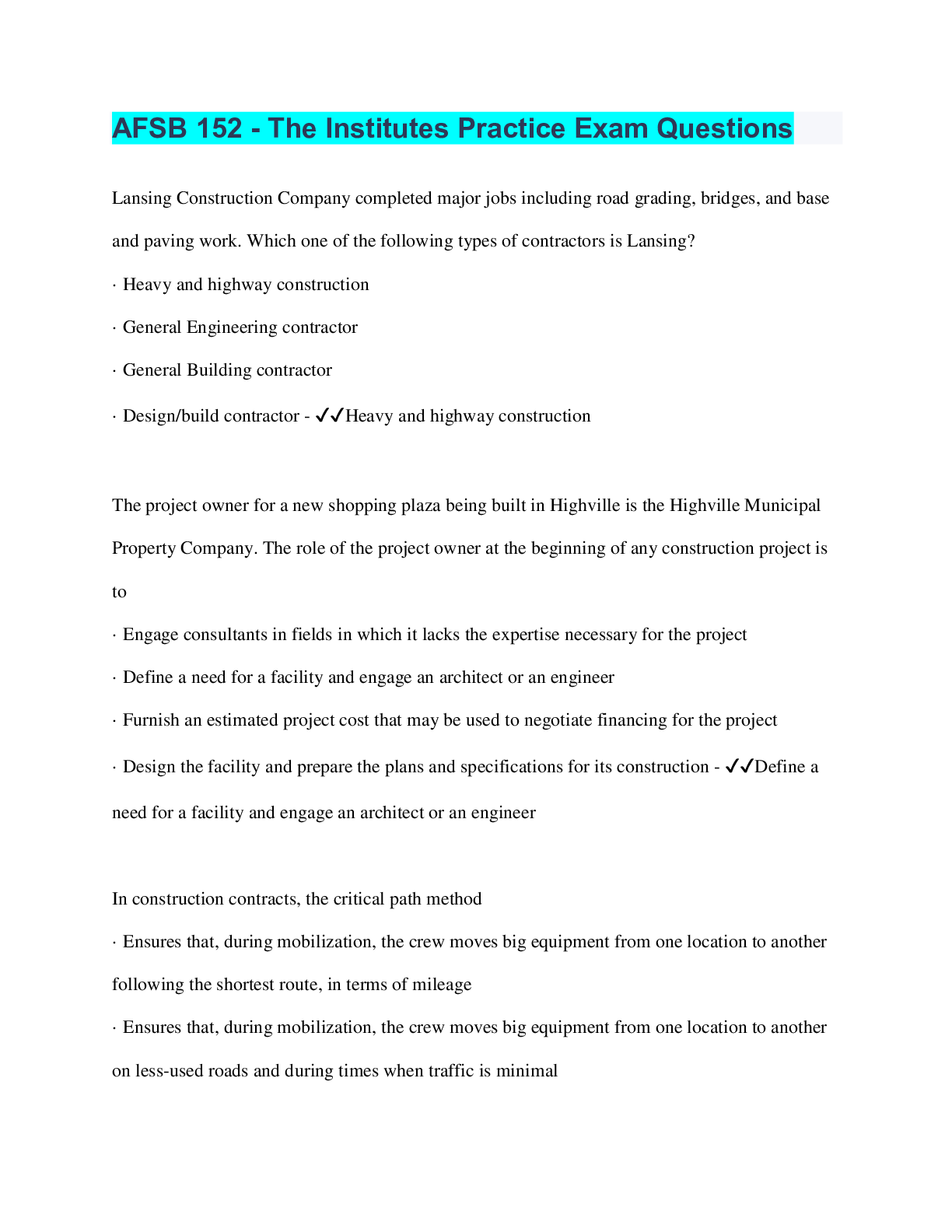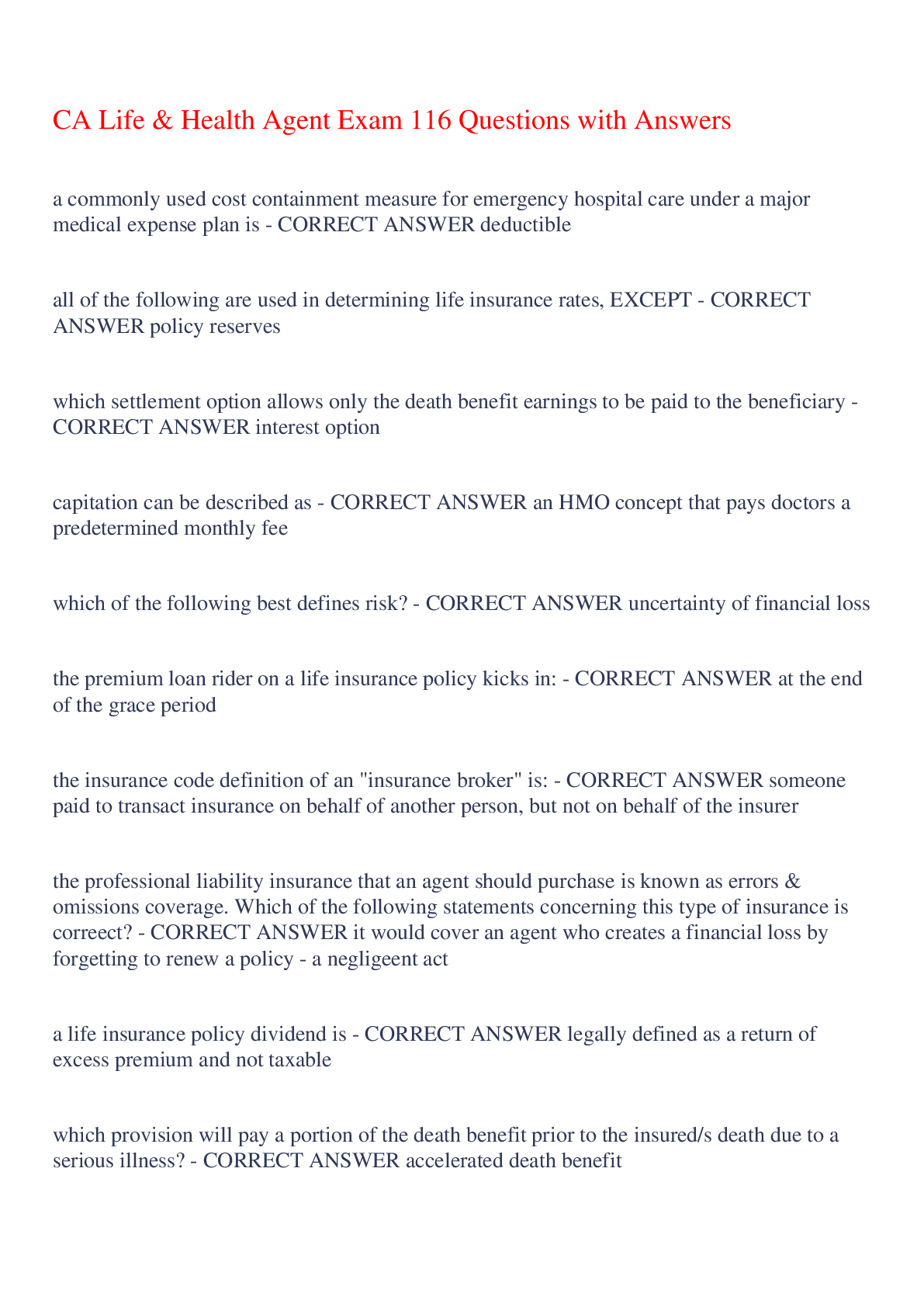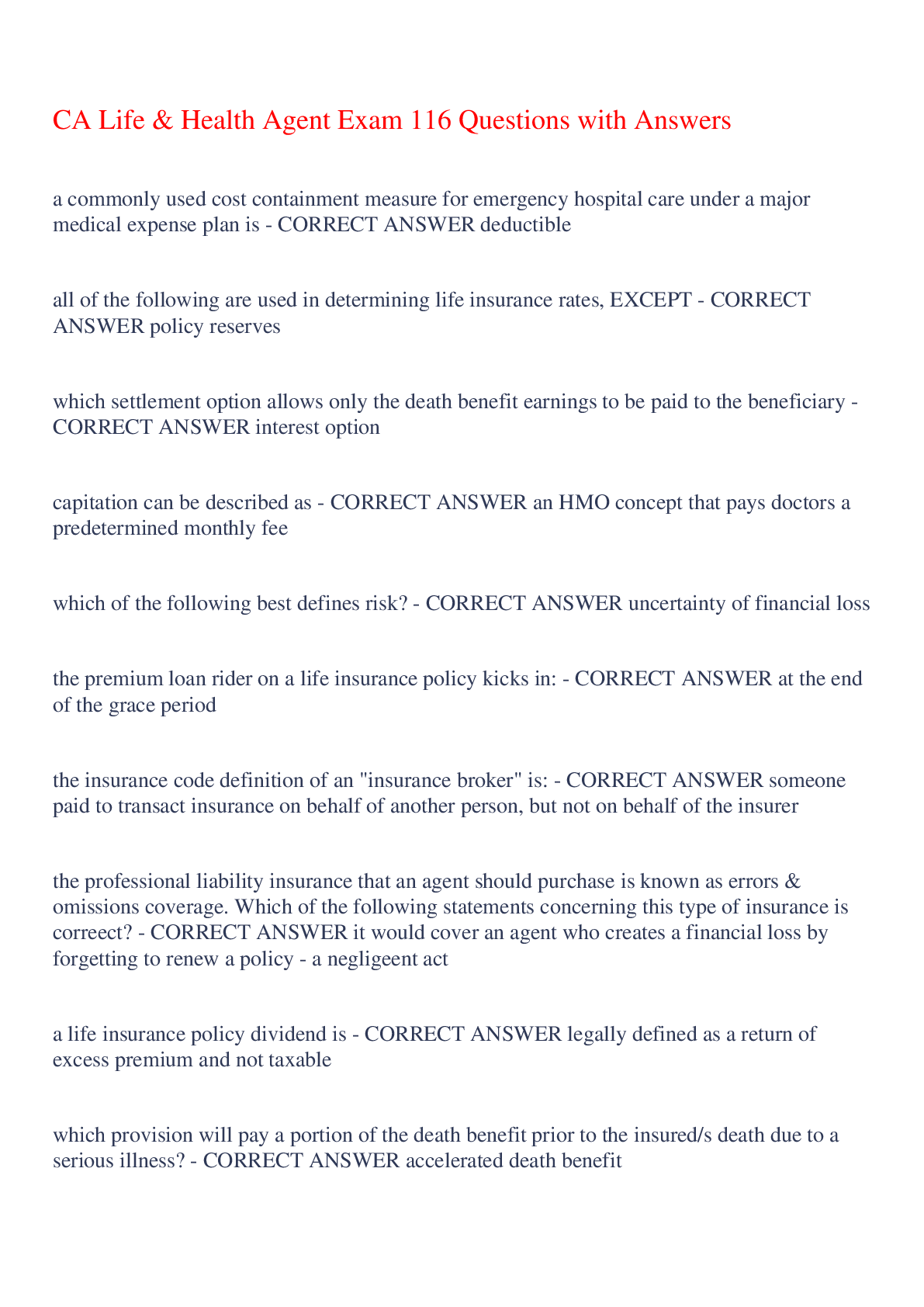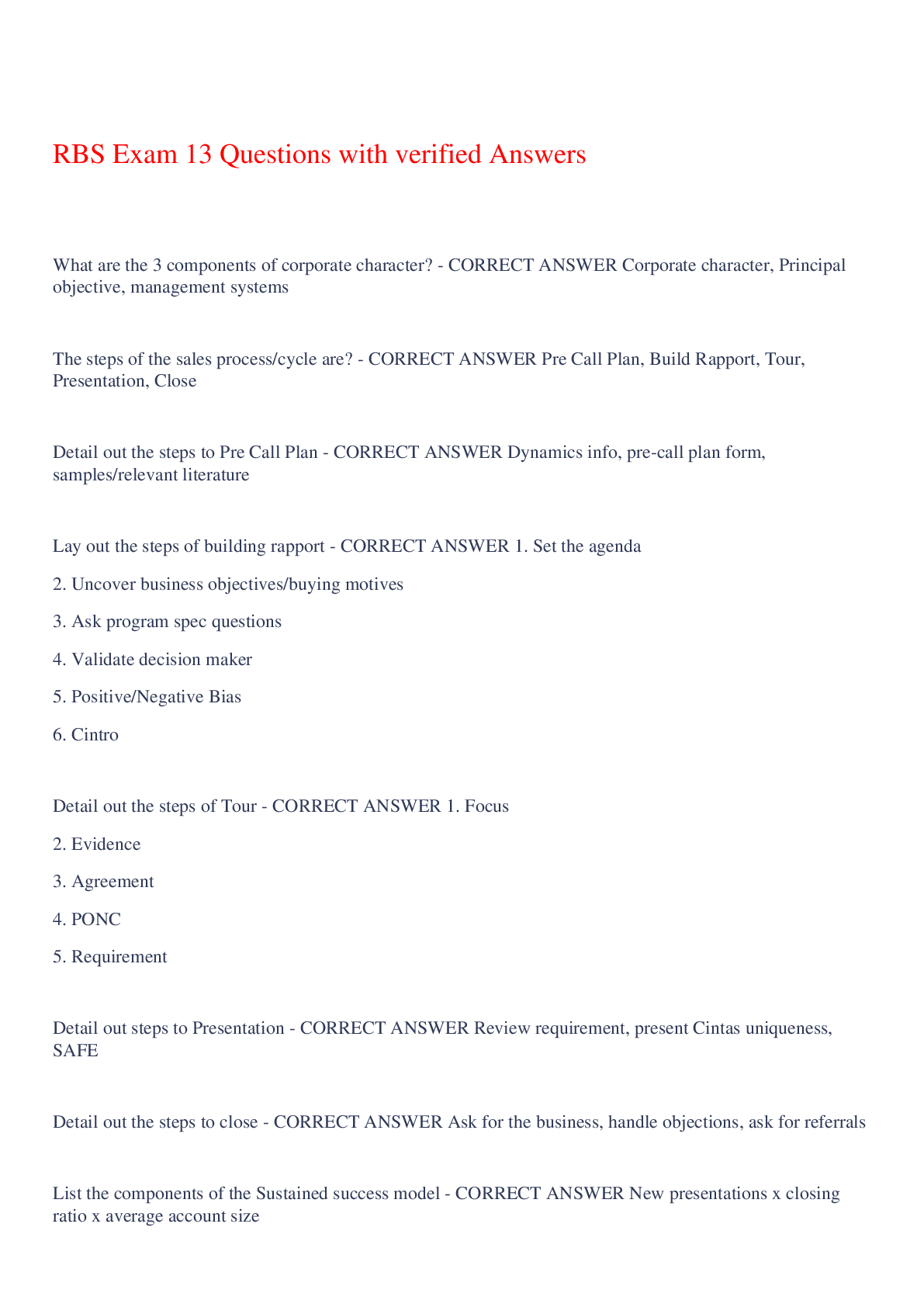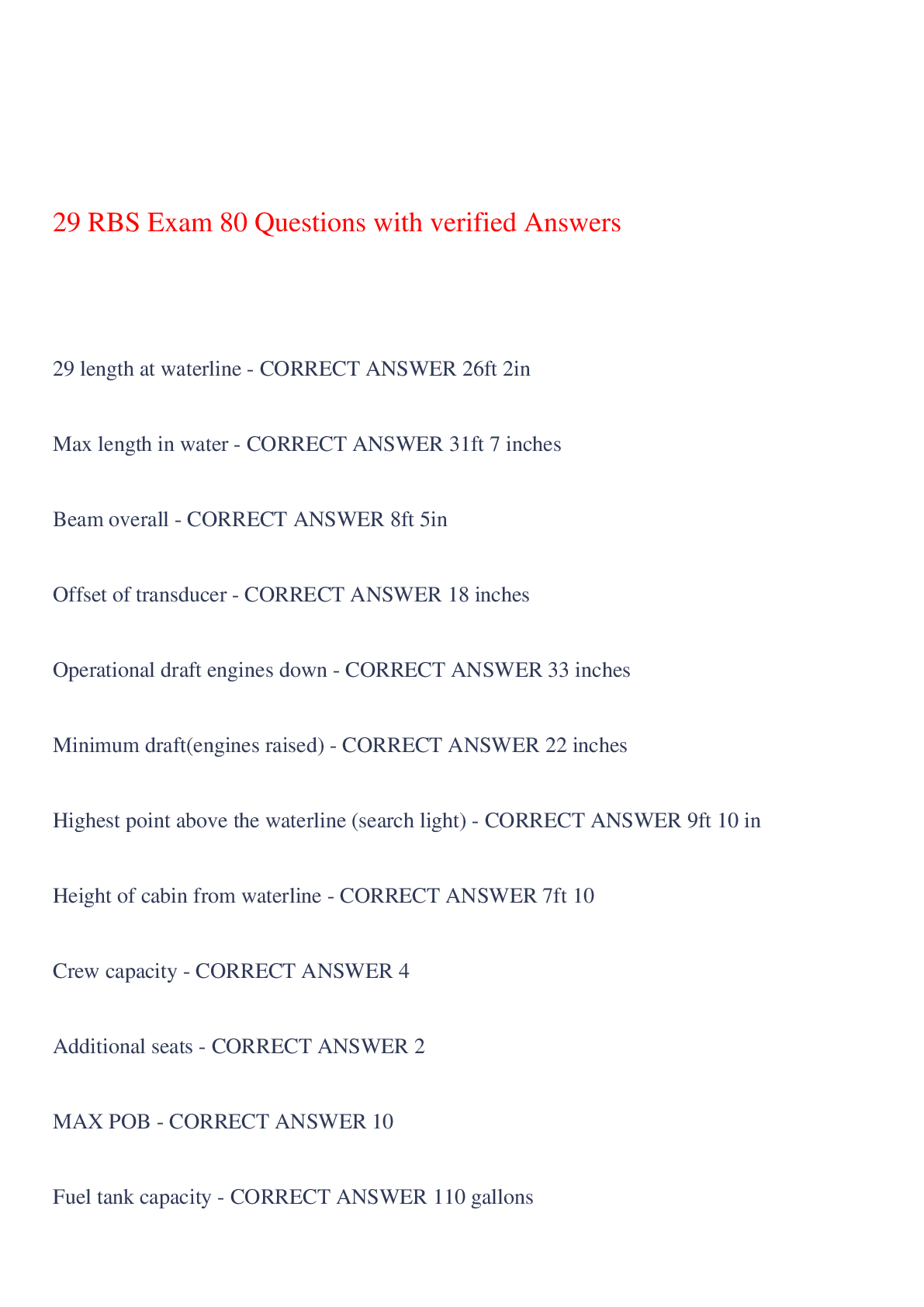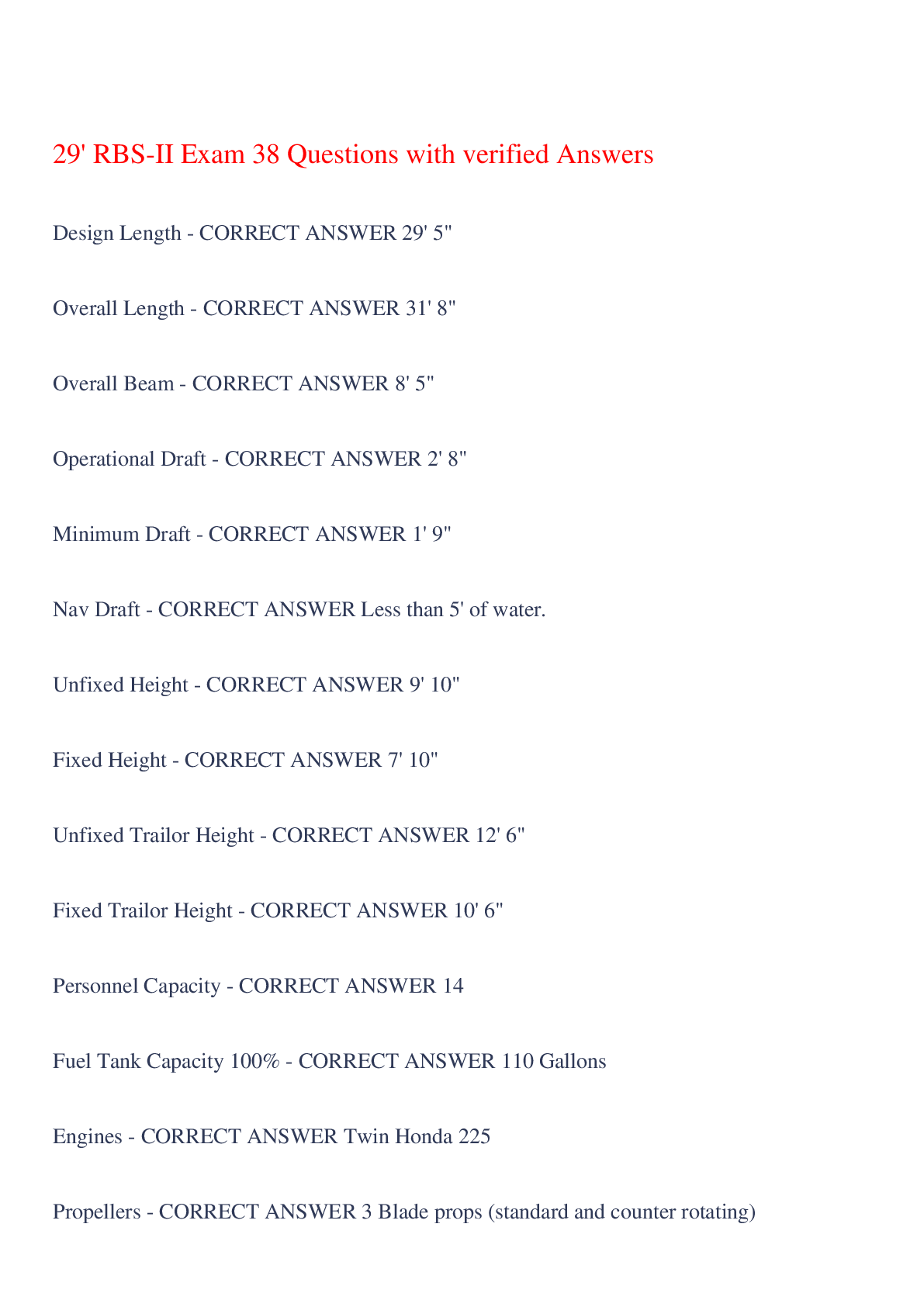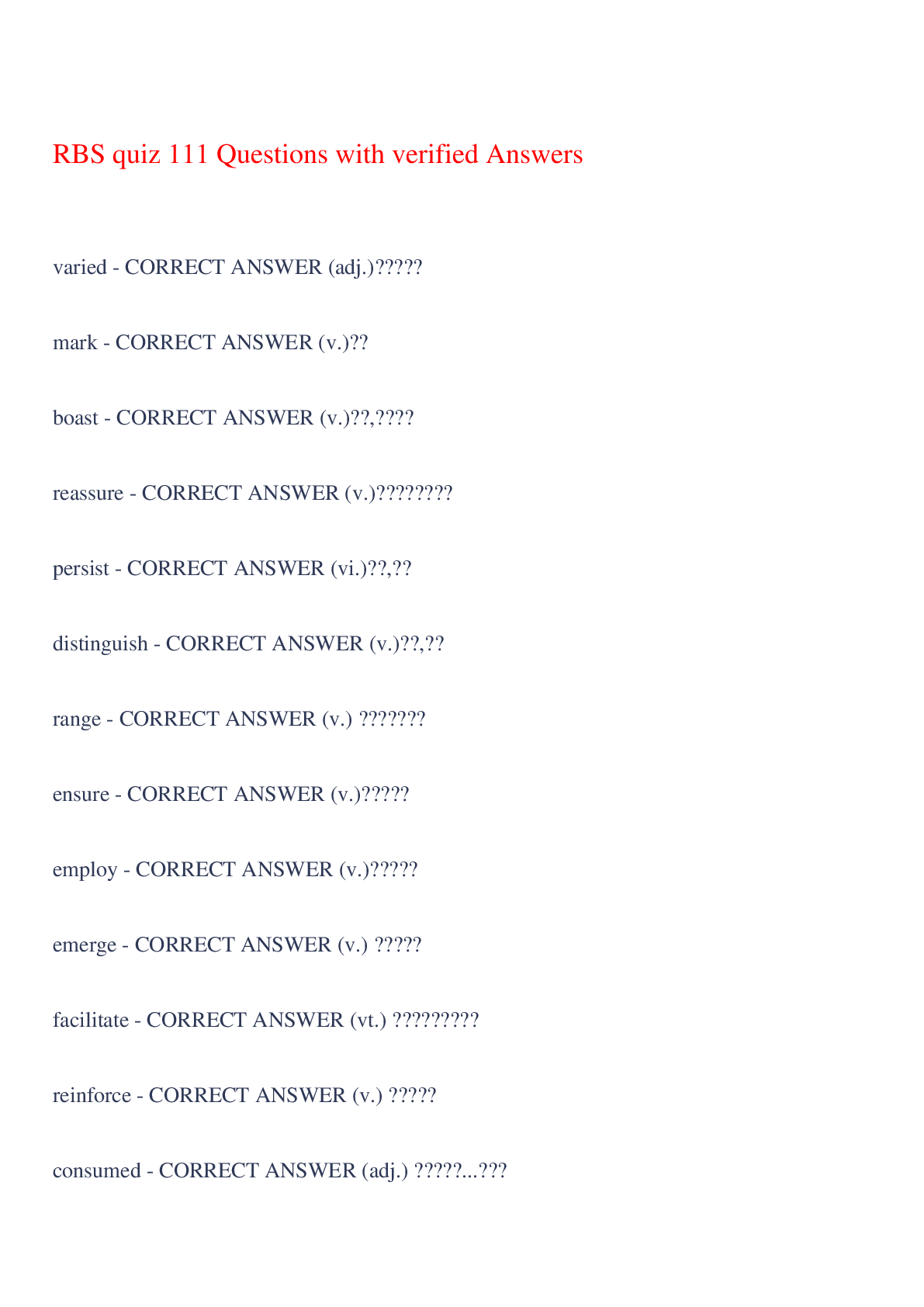NCLEX Exam 116 Questions with Verified Answers,100% CORRECT
Document Content and Description Below
NCLEX Exam 116 Questions with Verified Answers Five Rights of Delegation - CORRECT ANSWER 1. Right Person 2. Right Task 3. Right Circumstance 4. Right Direction and Communication 5. Right Sup... ervision and Evaluation Maslow's Hierarchy of Needs - CORRECT ANSWER Five Rights of Medication Administration - CORRECT ANSWER 1. Right Client 2. Right Drug 3. Right Dose 4. Right Route 5. Right Time Acetaminophen (Tylenol) - CORRECT ANSWER Antidote/Reversal: acetylcysteine (Muscomyst) Toxic Level: >250mcg/mL Benzodiazapine - CORRECT ANSWER Antidote/Reversal: flumazenil (Romazicon) Curare - CORRECT ANSWER Antidote/Reversal: edrophonium (Tensilon) Cyanide Poisoning - CORRECT ANSWER Antidote/Reversal: methylene blue Digitalis/Digoxin - CORRECT ANSWER Antidote/Reversal: digoxin immune FAB (Digibind) Ethylene Poisoning - CORRECT ANSWER Antidote/Reversal: fomepizole (Antizol) Heparin and enoxaparin (Lovenox) - CORRECT ANSWER Antidote/Reversal: protamine sulfate Iron - CORRECT ANSWER Antidote/Reversal: deferoxamine (Desferal) Lead - CORRECT ANSWER Antidote/Reversal: succimer (Chemet) Magnesium Sulfate - CORRECT ANSWER Antidote/Reversal: calcium gluconate 10% (Kalcinate) Narcotics - CORRECT ANSWER Antidote/Reversal: naloxone (Narcan) Warfarin - CORRECT ANSWER Antidote/Reversal: phytonadione (Vit. K) Aminophylline - CORRECT ANSWER bronchodilator (IV) Therapeutic Level: 10-20 mcg/mL Toxic Level: >20 mcg/mL Carbamazepine - CORRECT ANSWER anticonvulsant Therapeutic Level: 5-12 mcg/mL Amitriptyline - CORRECT ANSWER antidepressant and nerve pain med Toxic Level: >500 ng/ML Digoxin - CORRECT ANSWER antiarrhythmic, blood pressure Therapeutic Level: 0.8-2.0 ng/mL Toxic Level: >2.4 ng/mL Gentamicin - CORRECT ANSWER antibiotic (renal/oto toxic) Therapeutic Level: 0.5-0.8 mcg/mL Toxic Level: >12mcg/mL Lithium - CORRECT ANSWER bipolar disorder Therapeutic Level: 0.4-1.4 mEq/L Toxic Level: >2 mEq/L Magnesium Sulfate - CORRECT ANSWER anticonvulsant Therapeutic Level: 4-8 mg/dL Toxic Level: >9mg/dL Phenobarbital - CORRECT ANSWER barbiturate/anticonvulsant Therapeutic Level: 10-30 mcg/mL Toxic Level: >40 mcg/mL Methotrexate - CORRECT ANSWER Chemotherapy/Immunosuppressant Toxic Level: >10 mcmol over 24 hours Phenytoin - CORRECT ANSWER anticonvulsant Therapeutic Level: 10-20 mcg/mL Toxic Level: >30 mcg/mL Quinidine - CORRECT ANSWER antiarrhythmic/anti-parasite Therapeutic Level: 2-5 mcg/mL Toxic Level: >10 mcg/mL Salicylate - CORRECT ANSWER NSAID Therapeutic Level: 100-250 mcg/mL Toxic Level: >300 mcg/mL Theophylline - CORRECT ANSWER bronchodilator Therapeutic Level: 10-20 mcg/mL Toxic Level: >20 mcg/mL Tobramycin - CORRECT ANSWER Therapeutic Level: 5-10 mcg/mL Toxic Level: >12 mcg/mL -dipine - CORRECT ANSWER Ca+ Channel Blocker -afil - CORRECT ANSWER Erectile Dysfunction -caine - CORRECT ANSWER Anesthetics -pril - CORRECT ANSWER ACE inhibitor -pam, -lam - CORRECT ANSWER Benzodiazapine -statin - CORRECT ANSWER Antilipidemic -asone, -solone - CORRECT ANSWER Corticosteroid -olol - CORRECT ANSWER Beta Blocker -cillin - CORRECT ANSWER Penicillin derivative (antibiotic) -ide - CORRECT ANSWER Oral Hypoglycemic -prazole - CORRECT ANSWER Proton Pump Inhibitor -vir - CORRECT ANSWER Antiviral -ase - CORRECT ANSWER Thombolytic -azine - CORRECT ANSWER antiemetic -phylline - CORRECT ANSWER bronchodilator -arin - CORRECT ANSWER anticoagulant -tidine - CORRECT ANSWER antiulcer -zine - CORRECT ANSWER antihistamine -cycline - CORRECT ANSWER antibiotic -mycin - CORRECT ANSWER aminoglycoside -floxacin - CORRECT ANSWER antibiotic -tyline - CORRECT ANSWER Tricyclic antidepressants -pram, -ine - CORRECT ANSWER SSRI's Serum Sodium (Na+) - CORRECT ANSWER 135-145 mEq/L Serum Potassium (K+) - CORRECT ANSWER 3.5-5 mEq/L Serum Calcium (Ca++) - CORRECT ANSWER 8.5-10.5 mg/dL Magnesium (Mg++) - CORRECT ANSWER 1.3-2.1 mEq/L Phosphorus (PO4) - CORRECT ANSWER 3.0-4.5 mg/dL Chloride (Cl) - CORRECT ANSWER 98-106 mEq/L pH - CORRECT ANSWER 7.35-7.45 PaCO2 - CORRECT ANSWER 35-45 mmHg PaO2 - CORRECT ANSWER 80-100 mmHg SaO2 - CORRECT ANSWER 90-100 mmHg HCO3 (bicarbonate) - CORRECT ANSWER 21-28 mEq/L RBC - CORRECT ANSWER Male: 4.5-6.1 million/uL Female: 4.0-5.5 million/uL Hgb - CORRECT ANSWER Male: 14-18 g/dL Female: 12-16 g/dL Hct - CORRECT ANSWER Male: 42%-52% Female: 37%-47% WBC - CORRECT ANSWER 5,000-10,000 mm3 Erythrocyte Sedimentation Rate (ESR) - CORRECT ANSWER <20mm/hr Total Serum Cholesterol - CORRECT ANSWER <200 mg/dL (desirable) >150 mg/dL (risk for stroke/cardiac events) Low-Density Lipids (LDL) - CORRECT ANSWER <130 mg/dL (desirable) High-Density Lipids (HDL) - CORRECT ANSWER Male: 35-65 mg/dL Female: 35-80 mg/dL Triglycerides - CORRECT ANSWER <150 mg/dL Male: 40-160 mg/dL Female: 35-135 mg/dL INR - CORRECT ANSWER 0.7-1.8 (normal) 2.0-3.0 (therapeutic-on anticoagulant therapy) PT - CORRECT ANSWER 11-12.5 (normal) Therapeutic Level: 1.5-2 times normal value Partial Thromboplastin Time (aPTT) - CORRECT ANSWER 30-40 seconds Therapeutic Level: 1.5-2 times normal value Platelets - CORRECT ANSWER 150,000-400,000 mm3 Albumin - CORRECT ANSWER 3.5-5 g/dL Ammonia - CORRECT ANSWER 15-45 mcg/dL Total Bilirubin - CORRECT ANSWER 0.1-1.0 mg/dL Total Protein - CORRECT ANSWER 6-8 g/dL Urine Specific Gravity - CORRECT ANSWER 1.003-1.030 Protein (urine) - CORRECT ANSWER 0.8 mg/dL Glucose (urine) - CORRECT ANSWER <0.5 g/day Ketones - CORRECT ANSWER NONE pH (urine) - CORRECT ANSWER 4.6-8 WBC (urine) - CORRECT ANSWER Male: 0-3 per high power field Female: 0-5 per high power field Serum Creatinine - CORRECT ANSWER Male: 0.6-1.2 mg/dL Female: 0.5-1.1 mg/dL BUN - CORRECT ANSWER 10-20 mg/dL Creatinine Clearance *best indicator of overal renal function - CORRECT ANSWER Male: 90-139 mL/min Female: 80-125 mL/min Blood Glucose (fasting) - CORRECT ANSWER 70-110 mg/dL Glycosylated Hemoglobin (HbA1C) - CORRECT ANSWER 4%-6% (expected range) >8% indicates poor diabetes mellitus control TPN Total Parenteral Nutrition - CORRECT ANSWER Hypertonic Solution Given via PICC line, tunneled catheter Prepared daily by pharmacy Use Sterile Asepsis for dressing change Check blood glucose every 4-6 hours Change bag every 24 Standard Precautions - CORRECT ANSWER When handling blood, bodily fluid, bodily tissue, mucous membranes, open skin PPE: depends on type of exposure (minimal is nothing) Contact Precautions - CORRECT ANSWER Used when germs are spread by touching ex) C. Difficile, Norovirus Minimal PPE: Gloves and Gown Droplet Precautions - CORRECT ANSWER Used to prevent contact with mucus and other secretions from nose, sinuses, throat, airway, and lungs. Use when contact will be within 3 ft or less ex) infulenza, mumps, pertussis Minimal PPE: Mask Airborne Precautions - CORRECT ANSWER Needed to prevent transmission from particles so small the can float in the air and travel long distances. ex) chickenpox, measles, Tuberculosis, SARS Minimal PPE: Well fitting mask *Use respirator mask for TB and SARS **Negative Pressure room Trust vs. Mistrust - CORRECT ANSWER 0-1 yr Teach parents to meet infant's physical and social needs Autonomy vs. Shame and Doubt - CORRECT ANSWER 1-3 yrs Provide child with acceptable options. Let them CHOOSE Initiative vs. Guilt - CORRECT ANSWER 3-6 yrs Assist parents to identify age/disease appropriate activities Idustry vs. Inferiority - CORRECT ANSWER 6-12 yrs Encourage child's participation in their care Identity vs. Role Confusion - CORRECT ANSWER 12-20 yrs Provide same age support group Intimacy vs. Isolation - CORRECT ANSWER 20-35 yrs Provide private time with partner/family Generativity vs. Stagnation - CORRECT ANSWER 35-65 yrs assist client with illness adaptation and home/work demands Integrity vs. Despair - CORRECT ANSWER 65+ yrs Encourage use of personal items when not at home HYPOnatremia - CORRECT ANSWER abnormally low sodium level (<135) in the blood, which helps regulate the amount of H2O in and around the cells HYPERnatremia - CORRECT ANSWER abnormally high sodium level (>145) in the blood, which helps regulate the amount of H2O in and around the cells. HYPOcalcemia - CORRECT ANSWER low blood calcium level (<4.0). HYPERcalcemia - CORRECT ANSWER high blood calcium level (>10.5) HYPOglycemia - CORRECT ANSWER HYPERglycemia - CORRECT ANSWER HYPOthyroidism - CORRECT ANSWER HYPERthyroidism - CORRECT ANSWER HYPOparathyroidism - CORRECT ANSWER HYPERparathyroidism - CORRECT ANSWER HYPOkalemia - CORRECT ANSWER HYPERkalemia - CORRECT ANSWER [Show More]
Last updated: 1 year ago
Preview 1 out of 11 pages
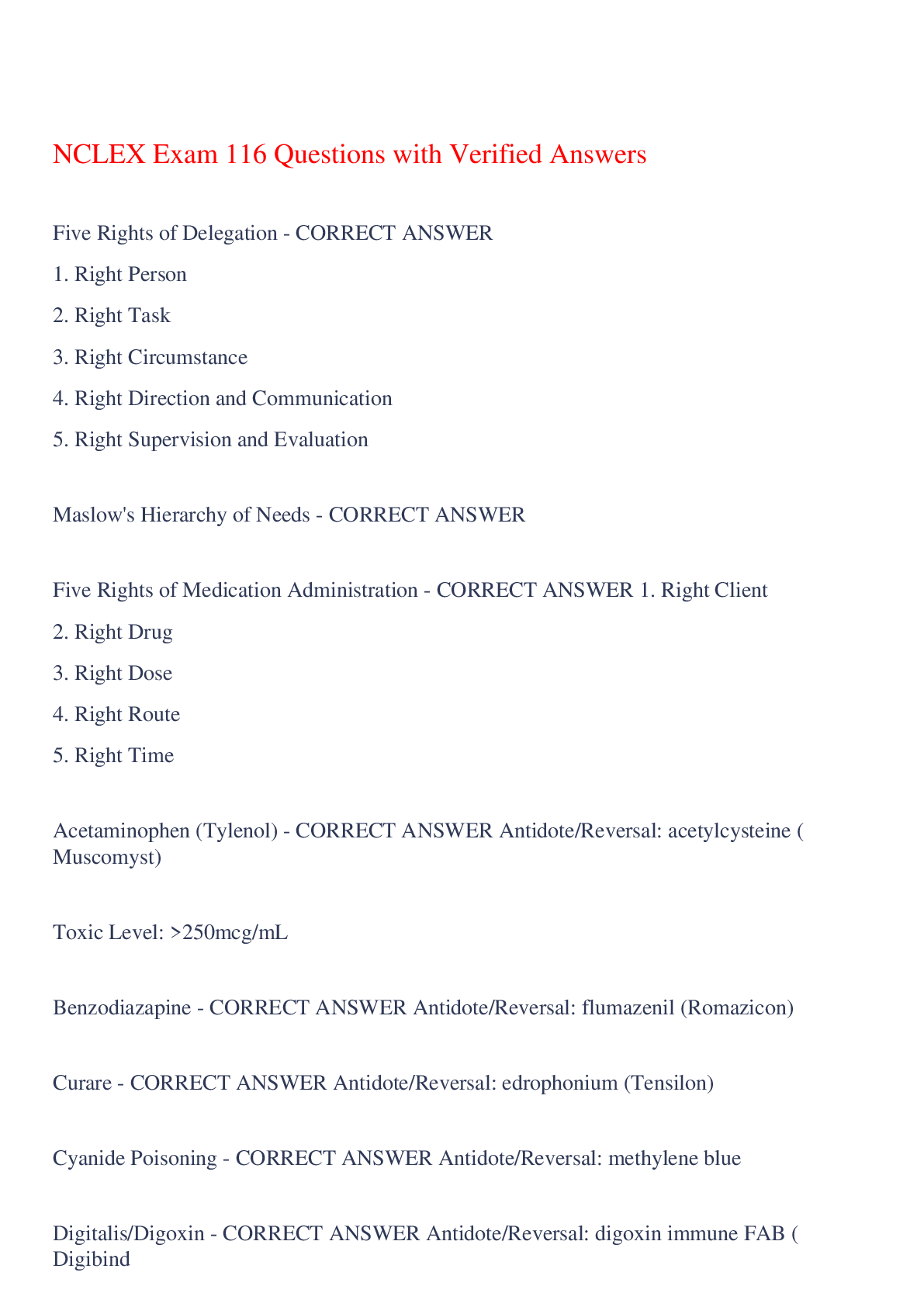
Buy this document to get the full access instantly
Instant Download Access after purchase
Buy NowInstant download
We Accept:

Reviews( 0 )
$9.50
Can't find what you want? Try our AI powered Search
Document information
Connected school, study & course
About the document
Uploaded On
Nov 19, 2023
Number of pages
11
Written in
Additional information
This document has been written for:
Uploaded
Nov 19, 2023
Downloads
0
Views
68


